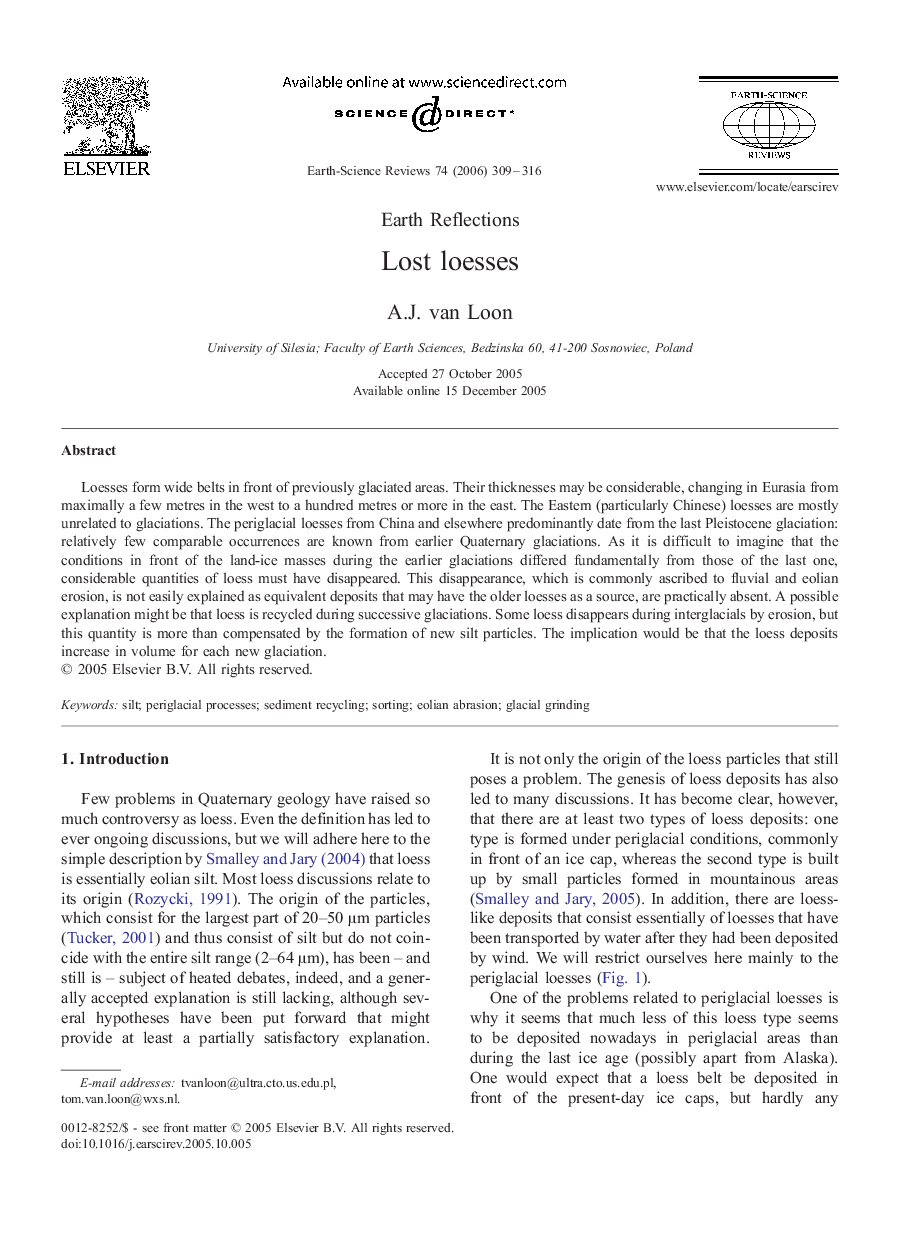| Article ID | Journal | Published Year | Pages | File Type |
|---|---|---|---|---|
| 4726527 | Earth-Science Reviews | 2006 | 8 Pages |
Abstract
Loesses form wide belts in front of previously glaciated areas. Their thicknesses may be considerable, changing in Eurasia from maximally a few metres in the west to a hundred metres or more in the east. The Eastern (particularly Chinese) loesses are mostly unrelated to glaciations. The periglacial loesses from China and elsewhere predominantly date from the last Pleistocene glaciation: relatively few comparable occurrences are known from earlier Quaternary glaciations. As it is difficult to imagine that the conditions in front of the land-ice masses during the earlier glaciations differed fundamentally from those of the last one, considerable quantities of loess must have disappeared. This disappearance, which is commonly ascribed to fluvial and eolian erosion, is not easily explained as equivalent deposits that may have the older loesses as a source, are practically absent. A possible explanation might be that loess is recycled during successive glaciations. Some loess disappears during interglacials by erosion, but this quantity is more than compensated by the formation of new silt particles. The implication would be that the loess deposits increase in volume for each new glaciation.
Related Topics
Physical Sciences and Engineering
Earth and Planetary Sciences
Geology
Authors
A.J. van Loon,
